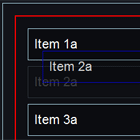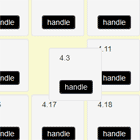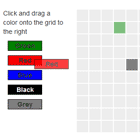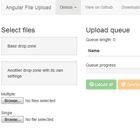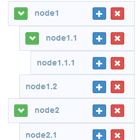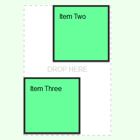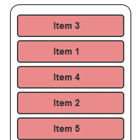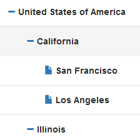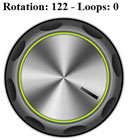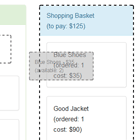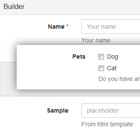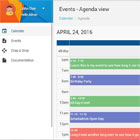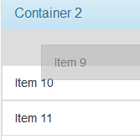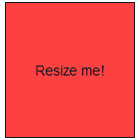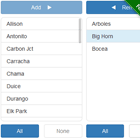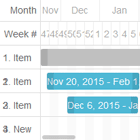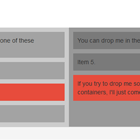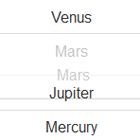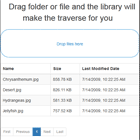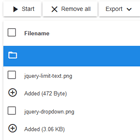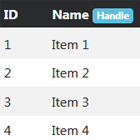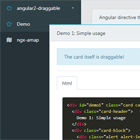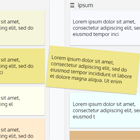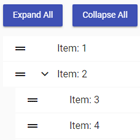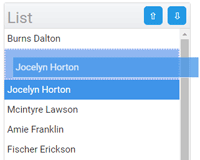ngx-dnd
Note: The drag-and-drop directives in angular/cdk are great. Use that if you don't need nested DnD containers. We are investigating using angular/cdk directives internally
Features
- Drag and Drop
- Sorting
- Events (drag, drop, over, out)
- Nesting
- Touch support
- Templating
Install
To use ngx-dnd in your project install it via npm:
npm i @swimlane/ngx-dnd @swimlane/dragula @types/dragula --save- Add
NgxDnDModule.forRoot()to your application module. - If using directives you will need to BYO styles or include
@swimlane/ngx-dnd/release/index.css. - You may need to add the following to your
polyfills.tsfile:
if (typeof window['global'] === 'undefined') { window['global'] = window; }Quick intro and examples
Directives
ngx-dnd provides a base set of directives to enable drag-and-drop. By default all children of a ngxDroppable element may be dragged and dropped. Add the ngxDraggable to restrict drag-and-drop to the parent container. In general prefer using the base directives to the help components introduced later.
<div class="ngx-dnd-container" ngxDroppable> <div class="ngx-dnd-item" ngxDraggable>Item 1</div> <div class="ngx-dnd-item" ngxDraggable>Item 2</div> <div class="ngx-dnd-item" ngxDraggable>Item 3</div> </div>Give multiple containers the same dropZone name to allow drag-and-drop between these containers.
<div class="ngx-dnd-container" ngxDroppable="example"> <div class="ngx-dnd-item" ngxDraggable>Item 1a</div> <div class="ngx-dnd-item" ngxDraggable>Item 2a</div> <div class="ngx-dnd-item" ngxDraggable>Item 3a</div> </div> <div class="ngx-dnd-container" ngxDroppable="example"> <div class="ngx-dnd-item" ngxDraggable>Item 1b</div> <div class="ngx-dnd-item" ngxDraggable>Item 2b</div> <div class="ngx-dnd-item" ngxDraggable>Item 3b</div> </div>ngxDraggable items can be restricted to specific containers:
<div class="ngx-dnd-container" ngxDroppable> <div class="ngx-dnd-item" [ngxDraggable]="['example-target']">Item 1a</div> <div class="ngx-dnd-item" [ngxDraggable]="['example-target']">Item 2a</div> <div class="ngx-dnd-item" [ngxDraggable]="['example-target']">Item 3a</div> </div> <div class="ngx-dnd-container" ngxDroppable="example-target"> <div class="ngx-dnd-item" ngxDraggable>Item 1b</div> <div class="ngx-dnd-item" ngxDraggable>Item 2b</div> <div class="ngx-dnd-item" ngxDraggable>Item 3b</div> </div>Components
ngx-dnd provides a set of helper components that encapsulates the directives mentioned and adds capability for data driven structures. In general you should prefer directives to components.
orderableLists = [['Item 1a', 'Item 2a', 'Item 3a'], ['Item 1b', 'Item 2b', 'Item 3b']];<ngx-dnd-container [model]="orderableLists"> </ngx-dnd-container>This component is effectively equivalent to:
<div class="ngx-dnd-container" ngxDroppable [model]="orderableLists"> <div class="ngx-dnd-item" ngxDraggable [model]="item" *ngFor="let item of orderableLists">{{item}}</div> </div>Including nested containers:
<ngx-dnd-container [model]="nestedLists"> </ngx-dnd-container>nestedLists = [ { label: 'Item 1', children: [] }, { label: 'Item 2', children: [ { label: 'Item 2a', children: [] }, { label: 'Item 2b', children: [] }, { label: 'Item 2c', children: [] } ] }, { label: 'Item 3', children: [ { label: 'Item 3a', children: [] }, { label: 'Item 3b', children: [] }, { label: 'Item 3c', children: [] } ] } ];See https://swimlane.github.io/ngx-dnd/ for more lives examples. Demo code is at https://github.com/swimlane/ngx-dnd/tree/master/demo.
Development
git clone [email protected]:swimlane/ngx-dnd.gitcd ngx-dndng build @swimlane/ngx-dndng serve- Browse to http://localhost:4200
Development server
Run ng serve for a dev server. Navigate to http://localhost:4200/. The app will automatically reload if you change any of the source files.
Build
Run ng build to build the project. The build artifacts will be stored in the dist/ directory. Use the --prod flag for a production build.
Running unit tests
Run ng test to execute the unit tests via Karma.
Running end-to-end tests
Run ng e2e to execute the end-to-end tests via Protractor.
Further help
To get more help on the Angular CLI use ng help or go check out the Angular CLI README.
CHANGELOG
This project uses heff/chg, a simple changelog/release history manager. When contributing to this project please add change notes (manually or using the heff/chg cli) to the ## HEAD (Unreleased) section.
Release
Manual process
rm -rf node_modulesnpm i- Verify change-log
npm version {version_number}git push --tagsnpm run publish:lib
Credits
ngx-dnd is a Swimlane open-source project; we believe in giving back to the open-source community by sharing some of the projects we build for our application. Swimlane is an automated cyber security operations and incident response platform that enables cyber security teams to leverage threat intelligence, speed up incident response and automate security operations.
